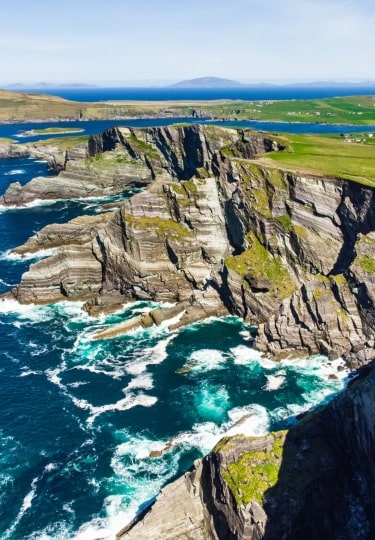Ask anyone Irish when is the best time to visit Ireland and they will tell you that it’s any time. They also may tell you that its reputation for rain is unfounded.
That Irish blarney is part of the appeal of this most welcoming of countries. With its traditional music, and its spectacular scenery, not to mention its legendary pubs, its people have a lot to be proud of.
In reality, between April to September is the best time to go to Ireland. From spring to early fall, the scenery is at its most glorious, the skies are the most picturesque, and the weather is at its most charmingly changeable.
Visiting Ireland By Season
Summer
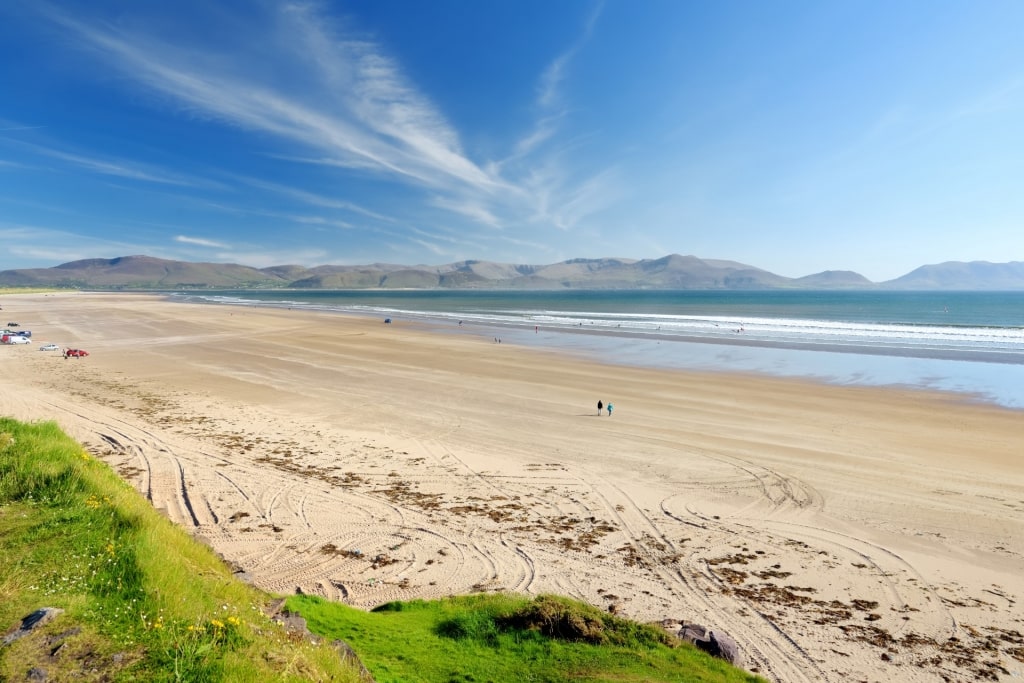
Inch Strand
Summer is a great time to see Ireland at its best. From late June to late September, the school holidays coincide with good weather.
This is when families head for Ireland’s scenic beaches, even if the water remains chilly. From the five-mile-long Inch Strand in County Kerry, to the twin beaches of Portrush (home of the famed Royal Portrush Golf Club), they are at their glorious best.
The Wild Atlantic Way takes in most of them, as well as sights such as the dramatic Cliffs of Moher, where crashing waves end their long journey across the ocean. As temperatures hit 65°F (18°C), it’s time to plunge into the clear blue water.
From horse racing to arts, and culture festivals, there is no shortage of major events in summer. Hikers will enjoy the Wicklow Mountains or Reeks District, picking blackberries along the way, and sightseers throng Killarney National Park.

Killarney National Park
Fall
As the leaves drop in autumn, Ireland’s scenery can look its most lovely. Golden shades color woodlands, while rain showers keep the fields bright green.
From September until November, temperatures are dropping, and in October they average from 45°F to 57°F (7°C to 14°C). There is increasing rain, so have a good coat to hand.
However, particularly in the earlier months, you can enjoy a last fill of sunshine to prepare for winter. This is also the time to spot dolphins or whales and catch the earlier sunsets before an evening indoors.
Winter
The gray skies of an Irish winter, between December, and early March, are beloved by photographers. However, they do also bring weeks of near-endless rain.
Temperatures are between 36°F and 46°F (2.2°C and 7.7°C), and average daily sunshine is only two hours in the south, and even less in the north. This is the time for a city break to see the indoor attractions of Belfast, Dublin, or Cork.
Spring
Spring in Ireland, from late March until late June, may well be the best time to visit. May and June are the sunniest months, averaging up to 6.5 hours of sunshine over much of the country.
In the southeast, that figure reaches seven hours of sunshine. No wonder the coastal regions from Wexford, and Waterford, through to Cork, and Kerry are so popular for holiday homes.
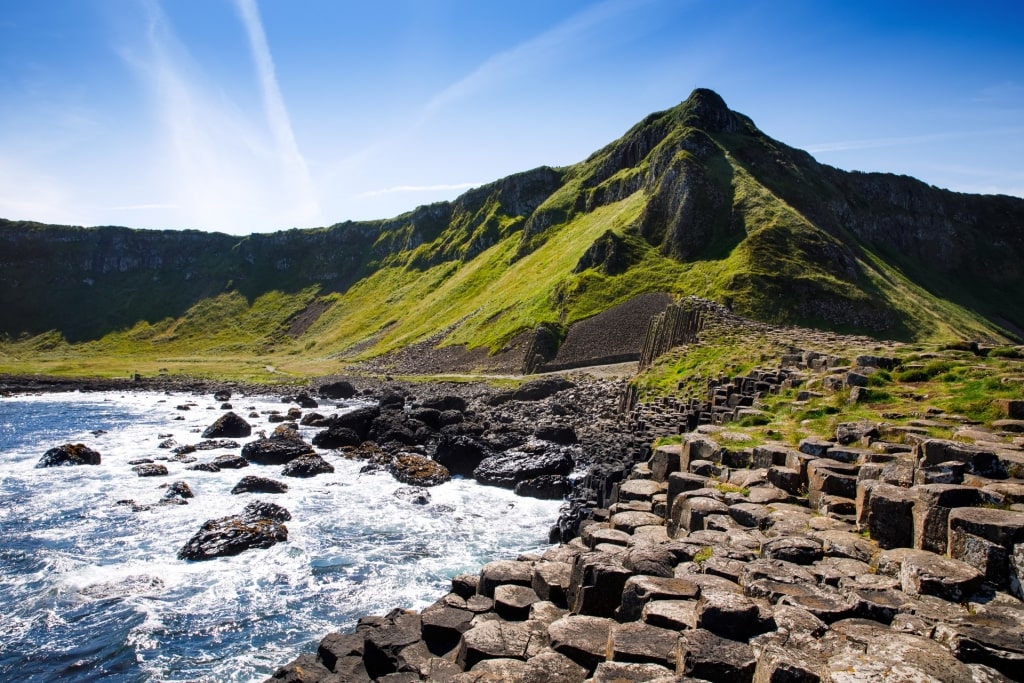
Giant Causeway
These long days make it a great time for a road trip along the Wild Atlantic Way, or around Northern Ireland’s Causeway coast. Golfers, anglers, and hikers will also love the ability to carry on late into the evening.
May in particular is a time to enjoy displays of spring flowers in places such as the Burren, and see fields full of lovable lambs. However, while average temperatures across the country are between 45°F and 59°F (7°C and 15°C), days of wind and rain can make it feel colder.
When Is Rainy Season?
Despite Ireland’s reputation for rainfall, many visitors are pleasantly surprised by the reality. That’s partly because much of its rain falls in the winter months, then late fall and early spring, times when holidaymakers are fewer.
That’s not to say that it won’t rain on even the best summer day. However, with so many attractions, from museums to ancient Irish castles to shelter in between showers, it’s seldom a major problem.
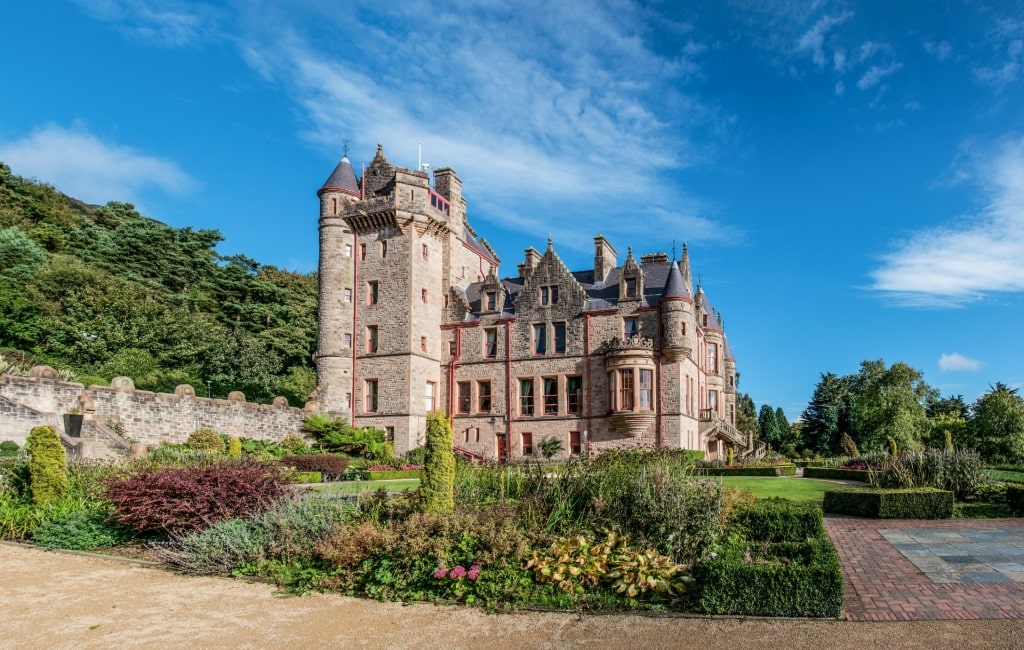
Belfast Castle
When Is High Season?
The high season in Ireland runs from mid-June and to early September. The weather is at its most well-behaved, and the countryside glows in the legendary “40 Shades of Green”.
Rain showers still happen, but are a welcome relief on hot, humid days, and pass quickly. This is the time for major cultural festivals, ancient traditional fairs, and long hikes in Ireland’s mountains.
When Is Shoulder Season?
Shoulder season in Ireland runs from March through June, and again in fall, from September to November. These months bookend the school holidays, when families head to the beaches, and other sights.
While the Irish weather can always be unpredictable, it may be unpredictably splendid. Spring weather that is summer-like, and sunny days that stretch far into fall, are common.
When Is Low Season?
Ireland’s low season is the winter months from October into March. However, cities such as Dublin or Cork remain busy year-round, particularly at weekends.
For those who do visit, the wind-lashed Wild Atlantic Way along the western coast truly lives up to its name. In the long evenings, it’s a time to huddle down with a cozy fireside drink in a pub.
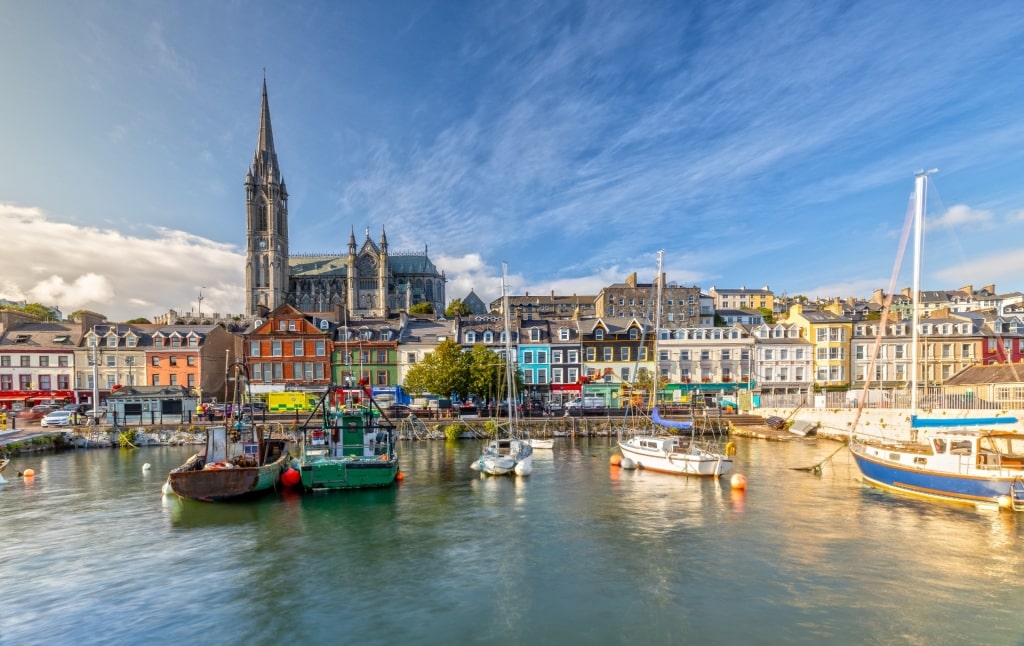
Cobh
Ready to explore Ireland’s breathtaking beauty for yourself? Then browse Celebrity’s Ireland cruises to find a vacation that will carry you and your loved ones off to the Emerald Isle.
